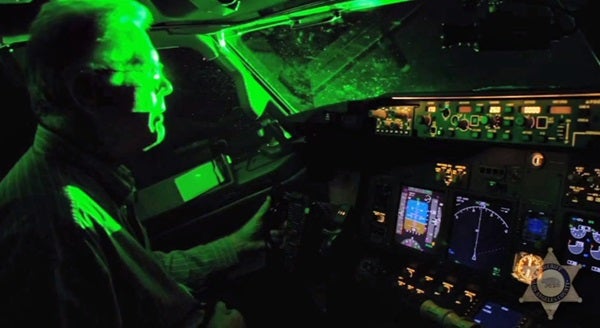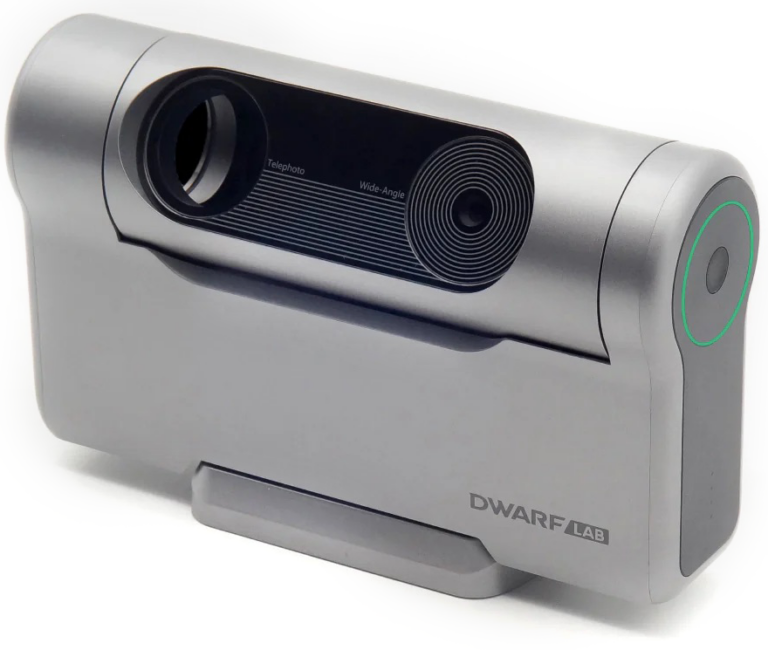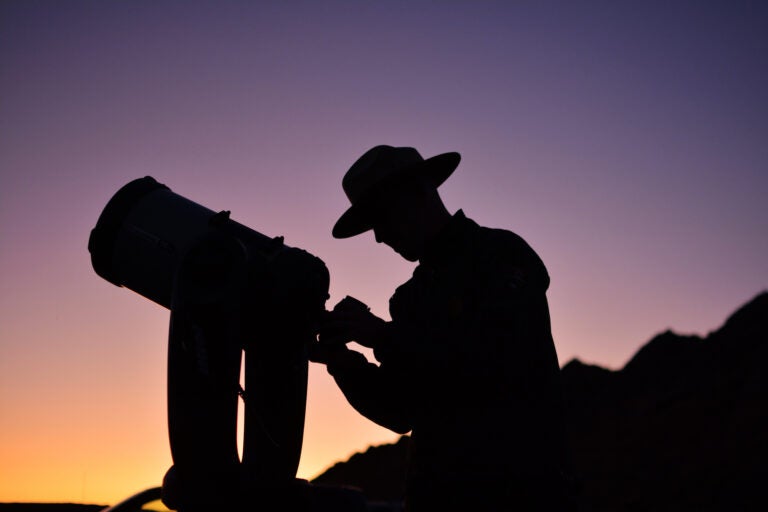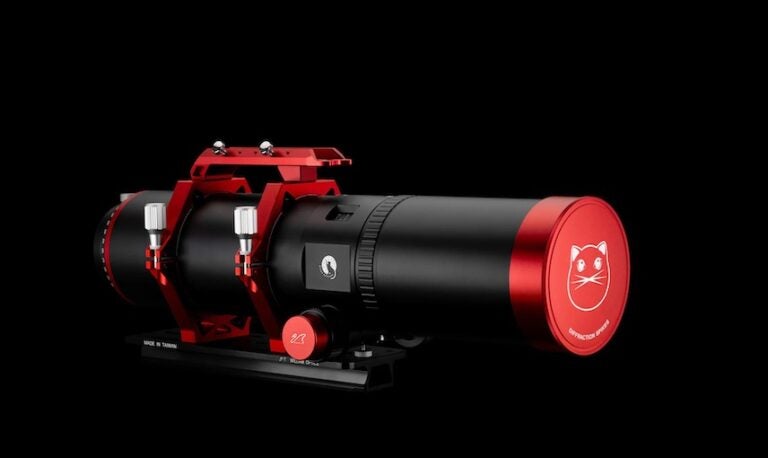The laser pointer came to the rescue. Here is a small, inexpensive device whose bright green beam, when directed skyward, illuminates minute dust particles in the air. The result is what looks like a Star Wars light saber that seems to stretch all the way to the stars themselves. No sooner did I learn of this valuable tool than I ordered one for myself.
What a difference it made at star parties! I could now point out objects in the sky to an audience of dozens, confident that all eyes were directed exactly where I wanted. Next to the telescope, a laser pointer has become my most-used star party accessory.
As with any innovation, though, there is a downside. In the right hands, a laser pointer is a useful device; in the wrong hands, it becomes at the very least a public nuisance, at worst a dangerous weapon.
The most common negative use comes from seemingly harmless pranks by those who have little or no knowledge of the power of even the smallest laser pointers. They flash them at each other, at neighborhood houses, passing vehicles, even screens at movie theaters.
More serious is the purposeful misuse of laser pointers at outdoor concerts and athletic events. Last year, a visibly angered Kanye West interrupted a performance to confront an audience member who had aimed a green laser at him. A fan was arrested at an August 2012 Cardinals–Giants baseball game after shining his laser at a Giants pitcher. The problem is global, with spectators flashing laser pointers at players during international soccer matches.
When I first heard of reports that a laser pointer could temporarily blind operators of moving vehicles or aircraft, I was skeptical. How could the beam enter their quarter-inch-wide pupil and remain there long enough to cause visual impairment? “Laser Strike” set me straight. The beam doesn’t have to hit the pilot or driver directly in the eye. A simple glance off a windshield creates a blinding flash that floods the vehicle or cockpit. While it’s true that some of these hits are accidental, many are intentional. Criminals shine green laser pointers at police cruisers and helicopters as a means of incapacitating the occupants long enough to make an escape.
Amateur astronomers can’t alone stop the “invasion of the green laser,” but we can help by making sure we’re not part of the problem. Star parties should not be set up within 2 miles (3 kilometers) of an airport, and we should never let any attendee try our laser pointers. Because even the most knowledgeable skygazer has mistaken the landing light of an approaching airliner for a bright planet or star (c’mon, you know you’ve done it!), the website Laser Pointer Safety (www.laserpointersafety.com) advises us to “NEVER point directly at a dim or unknown ‘star.’ Instead, move in a circular motion around the object. When doing the circular motion, or when ‘drawing out’ a constellation, keep the beam moving and keep it away from any stars. The ‘stars’ may be aircraft.” As well as allowing us to demonstrate sensible use of laser pointers, a star party is a perfect forum for enlightening the community about the hazards inherent in the misuse of these seemingly harmless instruments.
Besides educating the public about the problem, we need to report any illegal use of laser pointers. Laser Pointer Safety and the Federal Aviation Administration’s Laser Safety Initiative (www.faa.gov/about/initiatives/lasers) provide guidelines for reporting such abuse. Both sites, plus the “Laser Strike” video clip, are must-see sources for anyone seeking information on laser pointer safety.
Questions, comments, or suggestions? Email me at gchaple@hotmail.com. Next month: my December 2012 “Prime 9” sky objects revisited. Clear skies!











